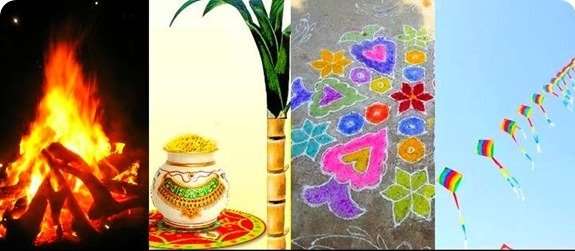Makara Sankranti
The sun changes from one zodiac sign to another zodiac sign once in every 30 days. The time at which the sun changes the zodiac sign is called ‘Sankramanam’. The day on which sankramanam occurs is called ‘Sankranti’. There are 12 Sankrantis in an year. Among them, 4 Sankrantis are very important. They are Mesha Sankranti, Karkataka Sankranti, Dhanus Sankranti and Makara Sankranti. A period of six months is called ‘Ayanam’. Two Ayanams or one year is equal to one day for Gods. The first six months which is called Uttarayanam is a day and remaining six months which is called Dakshinayanam is a night for Gods. Uttarayanam begins with Makara Sankranti and ends with Karkataka Sankranti. Dakshinayanam begins with Karkataka Sankranti and ends with Makara Sankranti. Danus Sankranti comes just one month before Makara Sankranti.
Sankranti is one among the biggest festivals celebrated by the Indians. Though the origin of the festival is not known exactly, it is traced back to the time of Aryans who worshipped the Sun God to save and protect them from the hot sunny summer and cold winters.
In Andhra Pradesh Sankranti is celebrated for 4 days. The first day is Bhogi. The second day is Sankranti. The third day is Kanuma. The fourth day is Mukkanuma.
Sankranti Across Country
Sankranti is celebrated across the country in different names and with different regional significances. It is called ‘Pedda panduga’ in Andhra and Telangana, Pongal inTamilnadu, Suggi Habba in Karnataka, Makara Sankranti in Keral & Maharastra, Uttarayan in Gujarat, Maghi in Punjab, Bhogili Bhihu is Assam, Magha saaj in Himachal Pradesh, Kicheri in Uttara Pradesh, Poush Parbon in West Bengal and Til sankrant in Bihar etc. Kite flyings and Bon fires are common in all states.
The another prominence of Makara Sankranti in North India ia Govardhan pooja. It is performed on the second day of Makara Sankranti. According to some Puranas on this day Lord Krishna lifted Govardhan hill to protect the people of Gokulam. Once lord Krishna asked the people of Gokulam to worship the Govardhana hill which blocked the clouds and provided rain. This made lord Indra angry. To avenge this insult Indra created thunder storms and rain. It flooded Gokulam. To protect people, cows and other animals lord Krishna lifted Govardana hill. People found shelter under the hill. Soon Indra realized his folly and took refuge from Krishna.
However the significance and sentiment attached to the festival vary from region to region, it symbolises the Indian culture. Moreover Sankranti is a festival that brings social harmony, bio unity in addition to happiness, prosperity and good luck for all.







![[Live] – Tirumala Darshan Crowd Status Today Tirumala Darshan Crowd Status Today](https://tirupatitirumalainfo.com/wp-content/uploads/2019/01/live-tirumala-darshan-waiting-time-100x70.png)










